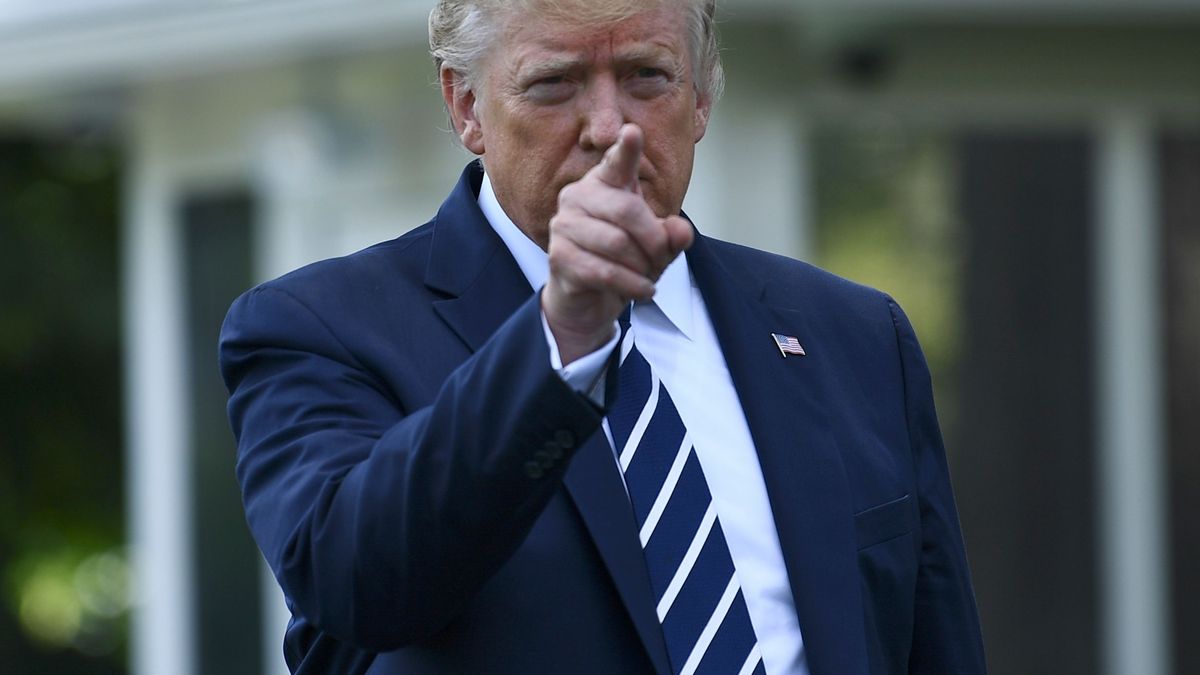In the history of USAits leaders have resorted to protectionism on several occasions. Four years after the start of the War of 1812 The Act of 1816 Tariffwhich imposed import tariffs of manufacturing products in order to reduce the dependence of British supplies and strengthen national defense. Similar measures were applied during the Secession war and in world wars. During the Cold wartrade with the countries of the communist bloc was strictly monitored and, for several inputs and technologies, even forbidden. These examples illustrate the difference between a protectionism that is used as an end in itself and that which is used as a means to achieve higher objectives.
The recent maneuvers of the president of USA – which consisted of applying tariffs to specific products and countries – they resume that same scheme. Trump is shown as a realistic president who, aware of having the most powerful army and the largest economy in the world, uses these two strengths as negotiation levers to pressure its commercial partners and obtain commitments on safety and economic positioning. If it was defined as a strict protectionist, it could opt for more radical measures, such as completely isolating its economy in an attempt to stimulate growth through a total autarchy, in the style of Latin American economies that followed the doctrine of Raúl Prébisch. However, its approach focuses on specific, bilateral and reversible measures, which prevents the risks of a global closure.
This approach is strongly evident in the sectors of the aluminum and steel. Trump understands that the dependence on critical supplies from abroad-especially those essential for the American military-industrial complex-represents a risk. By imposing tariffs on these raw materials, internal production encourages and reduces vulnerability to unilateral decisions of foreign suppliers.
The measure, although economically inefficient, does not seek to erect a general wall, but to encourage self -sufficiency. The European Union This issue understands well, since, after the outbreak of war in Ukraine, he evidenced his excessive dependence on Russian gas, which forced many countries to pay exorbitant prices to ensure their supply.
The use of tariffs as a negotiation instrument demonstrates that Trump does not conceive protectionism as a path to sustainable development, but as a tool to obtain concessions and improve their position against the competitors of the United States. For example, the threat of applying tariffs to Mexico and Canada products He forced these countries to assume border security commitments – as the deployment of 10,000 elements of the National Guard and the allocation of 1.3 billion dollars in technological and operational improvements. Once the objectives were achieved, these measures were suspended, which demonstrates the transitory nature of the strategy.
However, this strategy is risky and leads several challenges. The punctual application of tariffs has an impact on the supply chain, more expensive imports and, consequently, raising prices for consumers. Besides, The repeated use of these measures – although reversible – generates uncertainty in international markets and mine confidence in the global trade system, by perceiving more as an instrument of confrontation than negotiation; This, in turn, reduces the reliability of the United States as a business partner. Thus, the challenge for US administration is to make these barriers work as pressure instruments without becoming a permanent obstacle to world economic growth and integration.
In addition, it is possible to analyze whether the protectionism It is the most efficient way to achieve these objectives or if there are alternatives that imply lower economic costs. History teaches that, although tactical use of tariffs can be effective in the short term, true growth is based on international opening and cooperation. The challenge for the United States lies, therefore, in balancing the need to ensure its national autonomy and security with the obligation to maintain fluid and competitive commercial channels.
For Argentina, the United States realistic foreign policy is a double -edged sword. On the one hand, it generates a more uncertain international environment, in which the forces of the countries over institutions prevail; On the other, it opens bilateral cooperation opportunities that did not exist before.
From the alignment of interest, fast and concrete agreements can be built on trade, investments and security that favor Argentine positioning. In the medium term, an ambitious free trade agreement could even be promoted that approaches the free economies of America. The challenge for Argentina is to develop a strategic vision that allows you to identify and take advantage of these opportunities.
Chief economist of the Freedom and Progress Foundation, and Theo Ellmann, analyst at the Freedom and Progreso Foundation.
Text prepared in co-authorship with Theo Ellmann, analyst at the Libertad y Progreso Foundation.
Source: Ambito
I am an author and journalist who has worked in the entertainment industry for over a decade. I currently work as a news editor at a major news website, and my focus is on covering the latest trends in entertainment. I also write occasional pieces for other outlets, and have authored two books about the entertainment industry.




